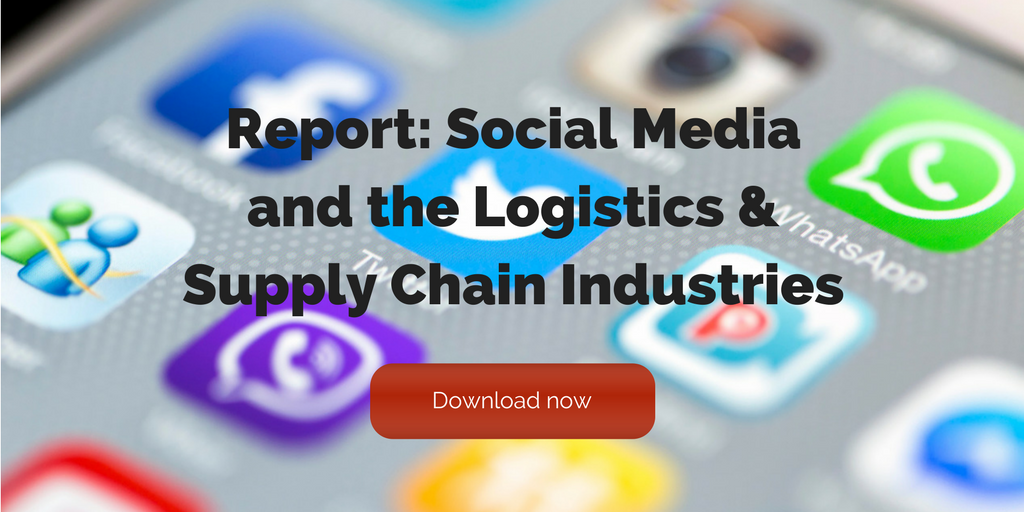
by Fronetics | Nov 1, 2017 | Blog, Manufacturing & Distribution, Strategy, Supply Chain
Manufacturing companies are hoping to continue their revenue growth in 2018 by focusing on 3 key areas.
KLR has released the results of its annual manufacturing industry outlook report, and the optimism following last year’s elections will continue straight through 2017.
With promises of tax reform, decreased federal regulations and looser trade agreements, manufacturers have slowly seen revenue growth throughout the U.S. markets. That growth is projected to continue into 2018.
56% of respondents expect business will continue to increase throughout the year.
And though manufacturing companies are striving to control their costs and cut back on unnecessary expenses, many companies reported increasing their marketing budgets, including technology, to invest in the future of their revenue growth.
So where is the additional money going? Manufacturing companies are investing their profits back into new products, expanding markets and breaking into new territories.
Here are the top 3 priorities for manufacturing companies in 2018.
1. Increasing share in existing markets
Over the next 12 to 18 months, 64% of the manufacturers surveyed expect their growth to come mainly from increased market share and organic growth in existing domestic markets. Manufacturing companies are looking to increase their market share through innovation, strengthening customer relationships, reliable hiring practices, and staying ahead of their competitors.
2. Seeking new markets for products and services
Manufacturing companies are trying to think outside of the box when it comes to expanding their markets. Avon got its big break when it took the now-dated approach of selling products door to door. By trying a different avenue, it was able to increase revenue without fighting for retail space with other corporate giants. Like Avon, companies are working hard to come up with innovative ways to break into untapped markets.
3. Developing new products and services in response to changing consumption patterns
Using social media platforms and other marketing tools, it’s easy for manufacturing companies to stay in touch with their customers. This engagement provides the best insight into the types of products, features and solutions your customers are looking for. Based on this crowdsourcing, or social listening, companies are able to develop products that they know will resonate with consumers and their changing needs. Though product development can be expensive and risky, incorporating customers into the conversation helps manufacturing companies minimize risk.
Despite growth throughout 2017, there are still challenges that manufacturing companies face. How are manufacturers coping with these challenges? They are adjusting their priorities and focusing on these three areas to continue growing their business and, ultimately, their sales.
Related posts:


by Fronetics | Oct 31, 2017 | Blog, Strategy, Talent
“I hate my job!” and “I don’t have any questions,” top our list of things you definitely shouldn’t say in a job interview.
Today’s supply chain and logistics professionals have all kinds of varied and exciting career opportunities. And increasingly, job hopping is becoming the norm: a 2016 study by LinkedIn found that “over the last 20 years, the number of companies people worked for in the five years after they graduated has nearly doubled.”
All these opportunities mean it’s probably time for you to brush up your interview skills. There’s an art to giving a good job interview. Making a meaningful connection with the person behind the desk, and confidently communicating your unique skill set is not as easy as it looks.
Check out these 4 things you should never say in a job interview — and what to say instead:
4 things not to say in a job interview
1) “I’m nervous.”
It might seem obvious, but you’d be surprised how many interviewees are too candid about their butterflies. You don’t want your potential employer to question your ability to act with confidence and decisiveness, no matter what pressures you’re under.
Instead, say: “I’m excited to be here!” Nerves and excitement are two sides of the same coin, and you’ll do yourself a favor by steering into the more positive emotional state.
2) Any lie
We’ve all heard it: “Everybody stretches the truth in a job interview.” Well, as tempting as it is to inflate your abilities or experiences, lying in an interview can come back to bite you in big ways.
Instead, tell the truth! It may not be as impressive, but it will save you from potential embarrassment and a severely damaged reputation.
3) “I hate my job!”
Nobody wants to hire a disgruntled worker. It should be obvious that anyone interviewing for a new job is ready for something different from their current role, so there’s no need to emphasize it.
Instead say, “I’ve enjoyed my work, but I’m looking to take on some new challenges.” Your interviewer is likely to be evaluating your emotional intelligence and maturity — explaining why you’re seeking a new position emphasizes just those traits.
4) “I don’t have any questions.”
Again, it may seem obvious, but not having prepared intelligent questions about the role or company you’re interviewing for is a clear red flag to any interviewer.
Instead, go the extra mile! Put in the time and intellectual curiosity to come up with at least two intelligent questions. It’s not just about impressing the person behind the desk. You’re informing yourself and gaining insight into whether this is the right position for you.
Related posts:


by Jennifer Hart Yim | Oct 26, 2017 | Blog, Strategy, Talent
More and more companies are contemplating how to cut their expenses and retain exceptional talent by offering work from home policies.
This guest post comes to us from Argentus Supply Chain Recruiting, a boutique recruitment firm specializing in Supply Chain Management and Procurement.
Time was, companies in the corporate world measured their employees’ success by time that they spent at their desks and in meetings. But over the past 10-15 years, the workplace has seen some radical transformations spurred by the rise of digital communications. Companies are becoming less formal, less rigid in their expectations, and more likely to hire on short-term contracts even for high-skilled positions. Every company is different, but today’s most successful corporate cultures are more interested in evaluating employees based on their results rather than process-oriented metrics like time spent in the office.
Companies are competing for talent by offering a more humane workplace, including an emphasis on work / life balance that allows high performers to maintain a family and hobbies as well as a demanding career without going insane. Since work / life balance became a buzzword, more companies are paying lip service to the concept. But a few big companies are stepping up and recognizing that the concept can pay dividends for companies as well as workers.
One of the biggest related growing trends in the workforce is the rise of work from home policies. Tools like Slack, Google Drive, Skype and others are making working from home (or offsite) more feasible than ever before. Companies have long offered occasional “telecommuting,” and many startup-style corporate cultures are known for their flexibility, but more major companies are offering official, codified work from home policies. IBM recently slashed its work from home policy, but organizations as large as Amazon, Xerox, GE and Dell have adopted official policies allowing employees to work offsite at least some of the time.
Anecdotally, as a recruitment firm, we’re seeing more companies include official work from home policies in their job descriptions when they’re hiring – recognizing that it’s a great selling point for people hoping to avoid lengthy commutes. The practice is growing. According to data from GlobalWorkplaceAnalytics.com, the number of individuals at corporate jobs (not self-employed) who are able to work from home has increased 115% since 2005, which is almost 10 times as fast as the rest of the workforce.
Working from home can be great for candidates with young families, those who want to avoid lengthy commutes, or who want to be able to concentrate without the distractions of a busy office environment (putting aside, for now, the distractions of the home or a 3rd party working space). Working from home is also green; it saves on greenhouse gases from commuting. But they can also offer dividends to companies themselves: a typical business can save up to $11,000 per person per year by allowing candidates to work from home at least some of the time. This is money that your company can shave off the bottom line, or put into higher salaries to try to attract even stronger performers.
It’s a great policy, and workers are demanding work from home policies more than ever before, especially passive candidates who need to be enticed to make a move. As we recently mentioned in another post, more of the candidates we speak with are asking about work from home policies when we approach them with opportunities. According to statistics, 80-90% of peoplewho don’t work from home want to start doing so at least 2-3 days a week to split their time between the kind of collaboration you can accomplish in an office, and the concentration you can achieve at home.
It’s where things are going, with more tools that make working from home easy coming online every day, and more Fortune 500 companies embracing it. Yet only 7% of corporations in the U.S. make working from home available to most of their employees. It can be a radical shift for a company to adopt a work from home policy, so it’s no wonder why so many companies are reticent. It doesn’t work for every industry and organization, but it can be an excellent strategy for talent attraction and retention.
Whether you’re a candidate thinking about looking to avoid a commute, or a company thinking about how you can save on overhead and attract exceptional talent, it’s worth thinking about working from home policies and what they have to offer the workplace.
Related posts:


by Fronetics | Oct 19, 2017 | Blog, Leadership, Strategy, Talent
Investing in your employees through wages, time and energy can have a big impact on your company’s productivity.
Successful companies understand that employees’ job satisfaction and engagement affect productivity. After all, employees are an extension of your business. Keeping them challenged and encouraged is key to their success, as well as the overall success of your company. In research for their book, Time, Talent, and Energy, Bain partners Michael Mankins and Eric Garton discovered that investing in your employees does, in fact, pay off for companies. “The top-quartile companies in our study unlocked 40% more productive power in their workforce through better practices in time, talent and energy management,” says Garton.
Here are the 3 investments that Mankins and Garton found most impactful to productivity.
3 investments that will invigorate productivity
1) Wages
Three economists studied OECD data representative of the whole population of businesses in 16 countries around the world. They found that firms paying higher wages were reporting higher productivity. The link between the two seems pretty basic: Pay workers higher wages and they will feel valued and be more productive at their jobs.
But many companies believe that higher wages come at the cost of their consumers. This doesn’t have to be the case. Dan Teran, chief executive of Managed by Q, is a thought leader in higher wages creating a culture of respect and productivity.
“Teran believes that most American businesses, and especially fast-growing start-ups like Uber, have mistaken short-term gains for long-term value, undercutting the share of revenue that flows to workers in a way that will perversely hurt their bottom line. He believes, even more radically, that decades of rising inequality and stagnant wages in America are not an inevitable byproduct of capitalism; instead, they come from a simple misunderstanding about how best to deploy workers and recognize the value they bring to a company.” Managed by Q’s ‘Good Job’ Gamble, Adam Davidson
From small businesses like Managed by Q to retail giants like Walmart, the ideology behind better wages and benefits is catching on. Companies are understanding the relationship between production and pay and trying to narrow the gap.
2) Time
The pressure of working long hours and being available around the clock has a lasting effect on employees. Such practices often lead to burnt out, overworked team members. In fact new research suggests that, on average, managers have fewer than 7 hours per week of uninterrupted time to do deep work. Their days are filled with meetings, responding to emails, and having short increments of time to complete tasks.
The average company loses more than 25% of its productive power to organizational drag, processes that waste time and prevent people from getting things done. Meetings that last too long and processes that move too slowly contribute to lower productivity, less quality work, and low employee morale.
Allowing employees the time to feel creative and focused on their projects will lead to breakthroughs in productivity. Try establishing quiet hours for certain times of the day to encourage workers to spend more uninterrupted time deep thinking, which can lead to innovative and fresh ideas.
3) Energy
An inspired employee is more than twice as productive as a satisfied employee and more than three times as productive as a dissatisfied employee. Yet, only one in eight employees are inspired. One of the most beneficial things a company can do is to inspire its employees. Engaged working environments and positions that allow creative and innovative thought will lead to increased employee engagement and productivity.
Companies like Apple, Netflix, Google and Dell are 40% more productive than the average company. Why is that, you ask? These companies invest in inspiring their employees.
“Inspirational leadership can be taught. Companies that recognize that and invest in making it happen create meaningful impact on the productivity of their company,” says Mankins. Studies have shown that employees that feel satisfied with their jobs are more productive.
Give your employees the autonomy to feel engaged in their work. This freedom will give them the opportunity to get creative and involved in their projects.
The opportunity exists for all employers to positively affect worker happiness while simultaneously increasing productivity. If your company is interested in exploring the benefits of investing in their employees, focusing on wages, time and energy is a good place to start. You might be surprised to find currently untapped financial gains just by putting investment in your employees at the top of your priority list.
Related posts:


by Fronetics | Oct 17, 2017 | Blog, Content Marketing, Marketing, Strategy
Use these strategies to help your business generate revenue with content.
One of the biggest challenges inherent to content marketing is measuring how writing blog posts and posting on social media equals a revenue stream. I know I write over and over again in this space about how content marketing is one of the most effective strategies for growing business and generating revenue. But many in the supply chain industry still struggle to understand the connection.
I highly suggest listening to this podcast interview with Content Marketing Institute founder Joe Pulizzi. He talks about monetizing content. In summary, businesses need to be about more than just their products and services — they need to be a valuable resource for their customers. This is why content marketing works. It’s a move away from the promotion of products toward branding oneself as a source of knowledge.
But back to monetization. Here are some key takeaways from Joe’s interview about how to generate revenue with content.
Revenue models
Once you’ve established your outlets for content distribution (blog, podcast, YouTube channel, social media platforms, or other publishing outlets) and built an audience, how do you go about generating revenue? According to Joe, there are 10 different revenue opportunities.
The traditional opportunities that most companies think about are:
- Selling products
- Selling services
- Keeping customers longer
- Increasing yield
- Selling different products
But Joe says that there are five additional revenue-generating activities:
- Sell advertising on your site
- Create a sponsorship deal
- Launch a conference or event
- Sell premium content
- Ask for donations
Joe advises that business new to these ideas not try everything at once. “Try one revenue model every six months,” he suggests.
Rethink your marketing department structure
Chances are, your marketing department is set up far less efficiently than it should be.
Joe sees a trend of businesses setting up their marketing departments primarily as an opportunity for the sales team — in other words, they are leading “product-first.” “Yes,” he says. “Selling products is important. But you can’t lead product-first anymore. The only competitive advantage people have today is communication.”
It’s time for marketers to refocus on making markets and creating opportunities for organizations. It’s about creating and developing trusted relationships with your audience, and monetizing those relationships by doing more than selling products. Adopting a new vision for your marketing can turn it from a cost-center into a profit-center, with marketing being “profitable in and of itself.”
Related posts:






